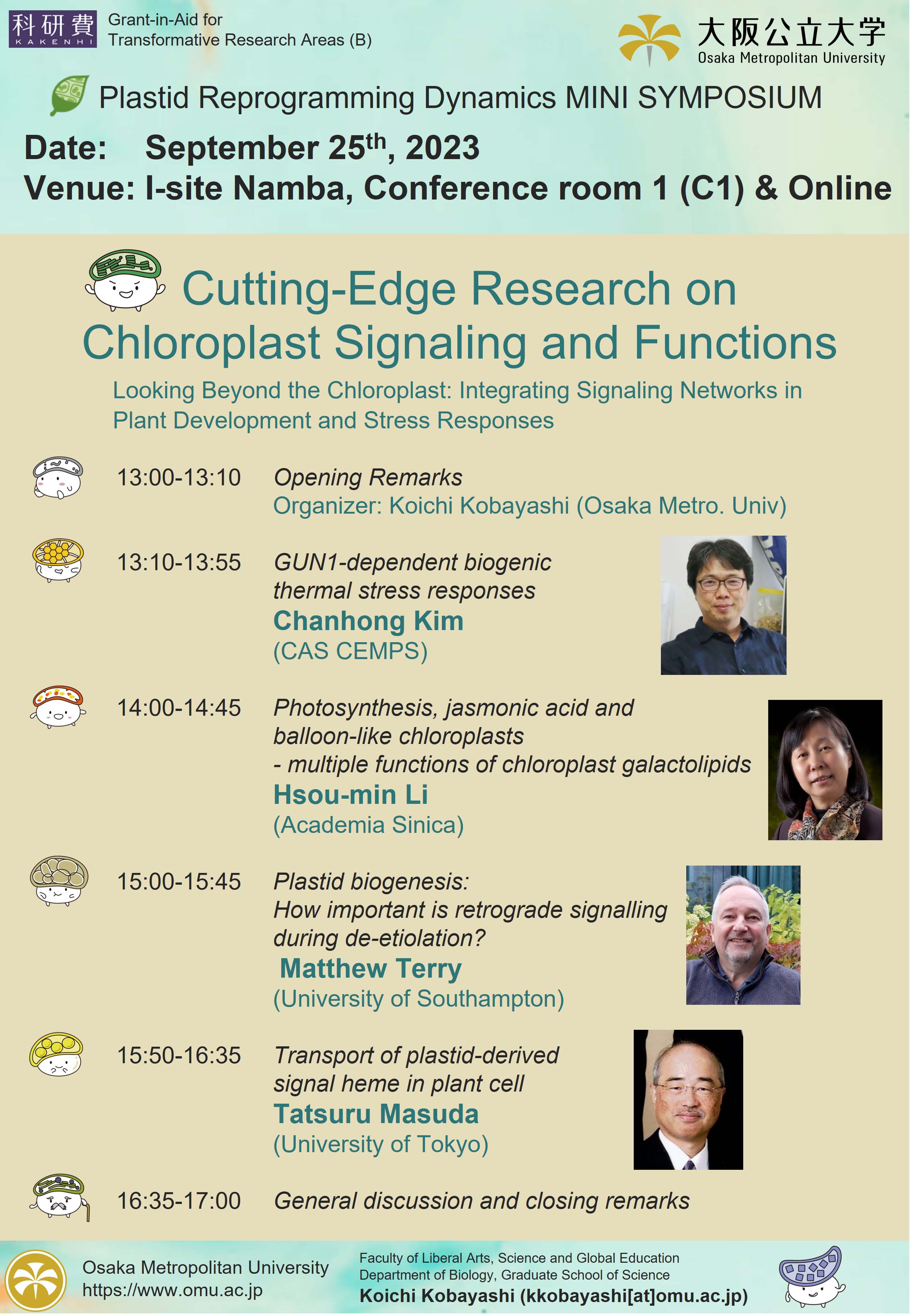
Participation is free but requires registration.
REGISTER NOW: https://forms.gle/a99maqYzH4fjMJmu8
ミーティング情報

Participation is free but requires registration.
REGISTER NOW: https://forms.gle/a99maqYzH4fjMJmu8
Lecture Summary
Chaojun Cui, Shan Qi, Jieya Xia, and Chanhong Kim
Shanghai Center for Plant Stress Biology, Center for Excellence in Molecular Plant Sciences, Chinese Academy of Sciences/University of the Chinese Academy of Sciences
Genomes Uncoupled1 (GUN1), a nuclear-encoded chloroplast protein, plays a central role in chloroplast-to-nucleus retrograde signaling by integrating various signals. Despite its primary role in organelle RNA metabolism, its target RNA has been unknown until now. Dr. Chanhong Kim and co-workers reveals that GUN1 targets a psbD transcript derived from a blue light-responsive promoter (BLRP), affecting its levels. They found that the C-terminal small MutS-related (SMR) domain of GUN1 is crucial for psbD BLRP processing, PsbD (D2) synthesis, and promoting PSII biogenesis during early seedling development and de-etiolation. Notably, GUN1 with the SMR domain also confers seedlings' thermotolerance upon germination. The latent function of GUN1 in thermotolerance as an RNA-binding protein and a key regulator of biogenic retrograde signaling is discussed.
Hsou-min Li and Chun-Wei Yu
Institute of Molecular Biology, Academia Sinica
Monogalactosyldiacylglycerol (MGDG) and digalactosyldiacylglycerol (DGDG) constitute around 80% of chloroplast lipids, playing essential roles in photosynthesis and stress responses. In a DGDG-deficient mutant (dgd1), severe growth retardation results from an overproduction of jasmonic acid (JA), highlighting the connection between MGDG/DGDG balance and phytohormone production. The high MGDG-to-DGDG ratio in dgd1 triggers JA production, with this ratio also influencing chloroplast shape. Dr. Hsou-min Li discusses the pivotal role of MGDG and DGDG in chloroplast lipid homeostasis, JA biosynthesis, and chloroplast morphology, contributing to plant adaptation under stress conditions.
Matthew J Terry
School of Biological Sciences, University of Southampton, UK
The rapid and safe development of photosynthetic apparatus upon exposure to light is crucial for plant seedling growth. This process involves the transformation of etioplasts or pro-plastids into functional chloroplasts, relying on effective communication between the nucleus and plastids. While we understand how the nucleus regulates the synthesis of nuclear-encoded chloroplast proteins through anterograde signaling, retrograde signaling, which conveys information from chloroplasts to the nucleus, remains poorly understood, particularly under normal growth conditions. Dr. Matthew J Terry explores the need for normal developmental retrograde signaling, potential candidates for this signal, and its significance in the de-etiolation process.
Tatsuru Masuda
Graduate School of Arts and Sciences, The University of Tokyo
In land plants, heme is synthesized in plastids but distributed to various organelles, potentially serving as a retrograde signaling molecule. The mechanisms of heme transport and metabolism within plants have remained unresolved. Dr. Tatsuru Masuda, University of Tokyo, and co-workers identifies an unknown ABC transporter protein in Arabidopsis thaliana and its ancestral counterpart in Marchantia polymorpha. Additionally, they revealed that transcriptional start site regulation of a heme metabolizing gene affects the metabolic flow of heme between plastids and cytosol. These findings indicate the significance of both plastidic and cytosolic heme metabolism for phytochrome assembly and retrograde signaling, shedding light on new heme transport and metabolic pathways in plant cells.
HTML Generator